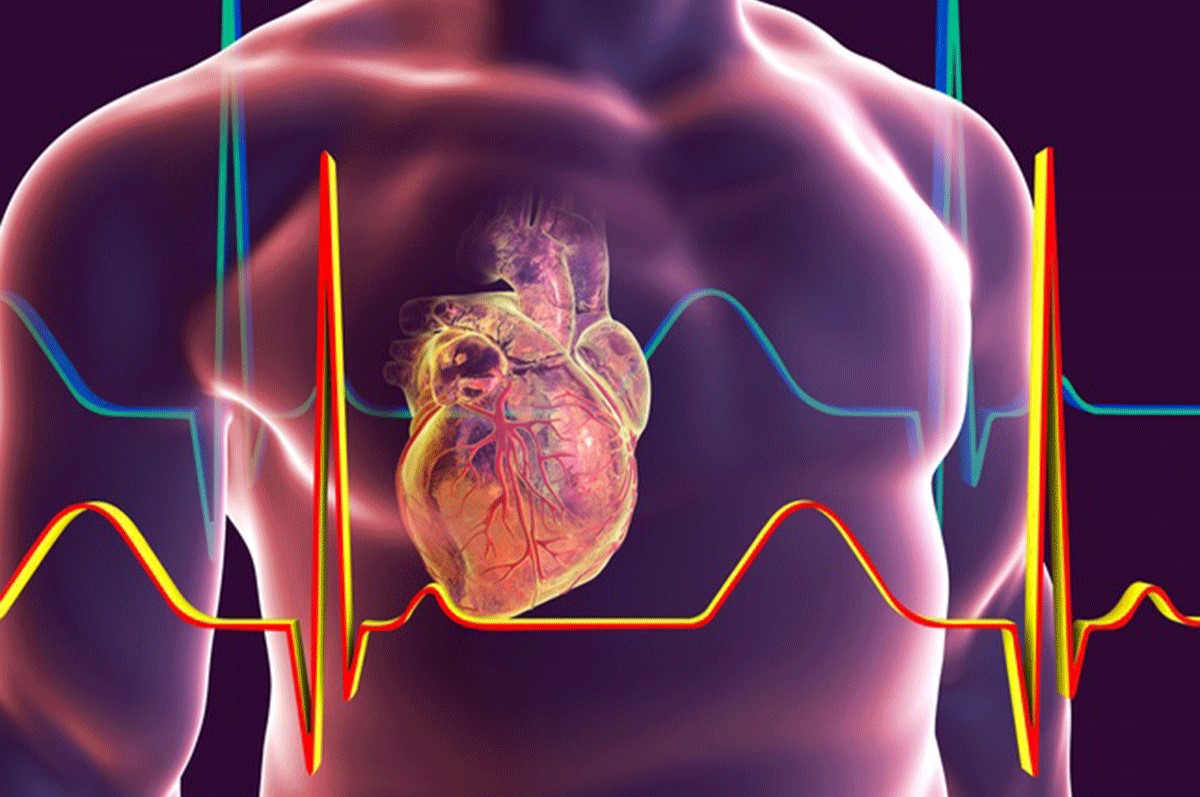
What is Long QT Syndrome? Long QT Syndrome (LQTS) is a rare heart condition that affects the heart's electrical system, causing it to take longer than usual to recharge between beats. This can lead to dangerous arrhythmias, fainting, seizures, or even sudden cardiac death. Affecting about 1 in 2,000 people in the U.S., LQTS can be inherited or acquired. Inherited LQTS stems from genetic mutations, while acquired LQTS often results from certain medications or electrolyte imbalances. Symptoms can vary widely, from fainting spells to palpitations, and may be triggered by physical activity or strong emotions. Early diagnosis and treatment are crucial for managing this condition effectively.
What is Long QT Syndrome?
Long QT Syndrome (LQTS) is a rare heart condition that affects the electrical system of the heart. It can cause the heart to take longer than normal to recharge between beats, leading to potentially life-threatening arrhythmias.
-
Definition: Long QT syndrome is a heart rhythm disorder characterized by a prolonged QT interval on an electrocardiogram (ECG), representing the time it takes for the heart muscle to contract and then recover.
-
Prevalence: LQTS affects approximately 1 in 2,000 people in the United States, making it a relatively rare condition.
Causes of Long QT Syndrome
Understanding the causes of LQTS can help in managing and preventing the condition. It can be inherited or acquired due to various factors.
-
Inherited vs. Acquired: Inherited LQTS is caused by genetic mutations and is present from birth. Acquired LQTS can develop later in life due to medications or other health conditions.
-
Ion Channels: Ion channels for sodium, calcium, potassium, and chloride play a crucial role in the heart's electrical activity. Abnormalities in these channels can lead to prolonged QT intervals.
-
Genetic Basis: Inherited LQTS is usually inherited in an autosomal dominant manner, meaning a single copy of the mutated gene is enough to cause the condition.
-
Medication Triggers: Certain medications, including antihistamines, decongestants, diuretics, antibiotics, antidepressants, and cholesterol-lowering drugs, can trigger acquired LQTS in susceptible individuals.
-
Electrolyte Imbalances: Severe diarrhea or vomiting, eating disorders like anorexia nervosa and bulimia, and thyroid disorders affecting mineral levels can also lead to acquired LQTS.
Symptoms of Long QT Syndrome
Symptoms of LQTS can vary widely among individuals. Recognizing these symptoms is crucial for early diagnosis and treatment.
-
Fainting (Syncope): Common symptoms include fainting, which can occur with little or no warning, especially during physical activity or strong emotions.
-
Blurred Vision and Lightheadedness: Other symptoms include blurred vision, lightheadedness, pounding heartbeats (palpitations), and weakness.
-
Seizures: In some cases, LQTS can cause seizures due to inadequate oxygen supply to the brain.
-
Sudden Death Risk: The condition significantly increases the risk of sudden cardiac death, particularly if the abnormal heart rhythm persists and is not corrected.
Diagnosing Long QT Syndrome
Early and accurate diagnosis of LQTS is essential for effective management. Various tests and monitoring methods are used to diagnose the condition.
-
Diagnostic Tests: Diagnosis typically involves an EKG to measure the QT interval. If the QT interval is longer than 450 milliseconds, it may indicate LQTS.
-
Holter Monitors: Portable EKGs like Holter monitors can be worn for up to a week to track heart rhythm continuously.
-
Event Monitors: Tiny event monitors inserted under the skin can monitor heart rhythms over extended periods, helping to identify infrequent arrhythmias.
-
Genetic Testing: Genetic testing can identify mutations in genes responsible for ion channels, aiding in diagnosing inherited LQTS.
Treatment Options for Long QT Syndrome
Treatment for LQTS depends on the severity of the condition and whether it is inherited or acquired. Various options are available to manage the condition effectively.
-
Lifestyle Changes: Avoiding triggers such as intense exercise, strong emotions, and certain medications is crucial for managing inherited LQTS.
-
Medications: Medications like beta-blockers or antiarrhythmic drugs may be prescribed to control heart rhythms.
-
Pacemakers: Pacemakers can help regulate heart rhythms by ensuring consistent beats, typically reserved for more severe cases.
-
ICDs: Implantable cardioverter defibrillators (ICDs) can detect abnormal heart rhythms and deliver electrical shocks to restore a normal heartbeat.
Managing Long QT Syndrome
Effective management of LQTS involves continuous monitoring and addressing underlying health conditions. Here are some key aspects of managing the condition.
-
Electrolyte Balance: Maintaining proper electrolyte balance is essential for heart function. Individuals with LQTS should monitor their levels of magnesium, potassium, and calcium.
-
Thyroid Disorders: Managing thyroid disorders that affect mineral levels is crucial for preventing arrhythmias.
-
Eating Disorders: Treatment of eating disorders like anorexia nervosa and bulimia is essential for managing acquired LQTS.
-
Severe Diarrhea/Vomiting: Managing severe diarrhea or vomiting is crucial for preventing electrolyte imbalances that can trigger acquired LQTS.
Risk Factors and Family History
Understanding the risk factors and family history of LQTS can help in early detection and prevention of the condition.
-
Family History: A family history of LQTS is a significant risk factor. If a first-degree relative has the condition, all family members should be tested.
-
Genetic Screening: First-degree relatives of individuals with LQTS should undergo genetic screening to identify potential carriers of the mutated gene.
-
Symptom-Free Periods: Some individuals with inherited LQTS may remain symptom-free for extended periods, but the risk of arrhythmias remains.
-
Symptom Triggers: Symptoms can be triggered by physical activity, excitement, fright, or even during sleep. Identifying these triggers is crucial for managing the condition.
Advances in Research and Treatment
Research on LQTS has advanced significantly over the years, leading to better understanding and treatment options for the condition.
-
Research Advances: Research on LQTS has advanced significantly over the past 50 years, from genetic discoveries to precision medicine.
-
Genotype-Phenotype Correlation: Understanding the genotype-phenotype correlation is crucial for managing LQTS, involving identifying genetic mutations and their impact on heart function.
-
Modifier Genes: Modifier genes play a significant role in determining the severity of LQTS. Research on these genes helps in developing personalized treatment plans.
-
iPS-Derived Cardiomyocytes: Using induced pluripotent stem cells (iPS) to derive cardiomyocytes has revolutionized the study of LQTS, allowing researchers to understand specific mechanisms of action and explore novel therapeutic strategies.
-
International Registry: The International Registry for LQTS has been instrumental in documenting family trees and facilitating major genetic discoveries, significantly advancing our understanding of the condition.
Importance of Continuous Monitoring
Continuous monitoring is essential for managing LQTS effectively. Various devices and methods are used to monitor heart rhythms and prevent sudden cardiac death.
-
Holter Monitors: Portable EKGs like Holter monitors can be worn for up to a week to track heart rhythm continuously.
-
Event Monitors: Tiny event monitors inserted under the skin can monitor heart rhythms over extended periods, helping to identify infrequent arrhythmias.
-
ICDs: Implantable cardioverter defibrillators (ICDs) can detect abnormal heart rhythms and deliver electrical shocks to restore a normal heartbeat.
-
Pacemakers: Pacemakers can help regulate heart rhythms by ensuring consistent beats, typically reserved for more severe cases.
Lifestyle Modifications for Long QT Syndrome
Lifestyle modifications play a crucial role in managing LQTS. Avoiding triggers and maintaining a healthy lifestyle can help prevent arrhythmias.
-
Avoiding Triggers: Avoiding intense exercise, strong emotions, and certain medications is crucial for managing inherited LQTS.
-
Electrolyte Balance: Maintaining proper electrolyte balance is essential for heart function. Individuals with LQTS should monitor their levels of magnesium, potassium, and calcium.
-
Thyroid Disorders: Managing thyroid disorders that affect mineral levels is crucial for preventing arrhythmias.
-
Eating Disorders: Treatment of eating disorders like anorexia nervosa and bulimia is essential for managing acquired LQTS.
-
Severe Diarrhea/Vomiting: Managing severe diarrhea or vomiting is crucial for preventing electrolyte imbalances that can trigger acquired LQTS.
The Role of Family Screening
Family screening is a critical aspect of managing LQTS. Early detection and preventive measures can help in managing the condition effectively.
-
Family History: A family history of LQTS is a significant risk factor. If a first-degree relative has the condition, all family members should be tested.
-
Genetic Screening: First-degree relatives of individuals with LQTS should undergo genetic screening to identify potential carriers of the mutated gene.
-
Symptom-Free Periods: Some individuals with inherited LQTS may remain symptom-free for extended periods, but the risk of arrhythmias remains.
-
Symptom Triggers: Symptoms can be triggered by physical activity, excitement, fright, or even during sleep. Identifying these triggers is crucial for managing the condition.
Advances in Research and Treatment
Research on LQTS has advanced significantly over the years, leading to better understanding and treatment options for the condition.
-
Research Advances: Research on LQTS has advanced significantly over the past 50 years, from genetic discoveries to precision medicine.
-
Genotype-Phenotype Correlation: Understanding the genotype-phenotype correlation is crucial for managing LQTS, involving identifying genetic mutations and their impact on heart function.
-
Modifier Genes: Modifier genes play a significant role in determining the severity of LQTS. Research on these genes helps in developing personalized treatment plans.
-
iPS-Derived Cardiomyocytes: Using induced pluripotent stem cells (iPS) to derive cardiomyocytes has revolutionized the study of LQTS, allowing researchers to understand specific mechanisms of action and explore novel therapeutic strategies.
-
International Registry: The International Registry for LQTS has been instrumental in documenting family trees and facilitating major genetic discoveries, significantly advancing our understanding of the condition.
Understanding Long QT Syndrome
Long QT Syndrome (LQTS) is a serious heart condition that affects the heart's electrical system, causing it to take longer to recharge between beats. This can lead to dangerous arrhythmias and even sudden cardiac death. LQTS can be inherited or acquired, with genetic mutations or certain medications and health conditions being the main culprits. Symptoms vary but often include fainting, seizures, and palpitations. Diagnosis involves an electrocardiogram (ECG), genetic testing, and continuous heart monitoring. Treatment ranges from lifestyle changes and medications to devices like pacemakers and ICDs. Early detection and family screening are crucial for managing the condition. Maintaining electrolyte balance and avoiding triggers are essential for those affected. Continuous research and advancements in treatment offer hope for better management and understanding of LQTS. Stay informed, get tested if you have a family history, and follow medical advice to manage this condition effectively.
Was this page helpful?
Our commitment to delivering trustworthy and engaging content is at the heart of what we do. Each fact on our site is contributed by real users like you, bringing a wealth of diverse insights and information. To ensure the highest standards of accuracy and reliability, our dedicated editors meticulously review each submission. This process guarantees that the facts we share are not only fascinating but also credible. Trust in our commitment to quality and authenticity as you explore and learn with us.


